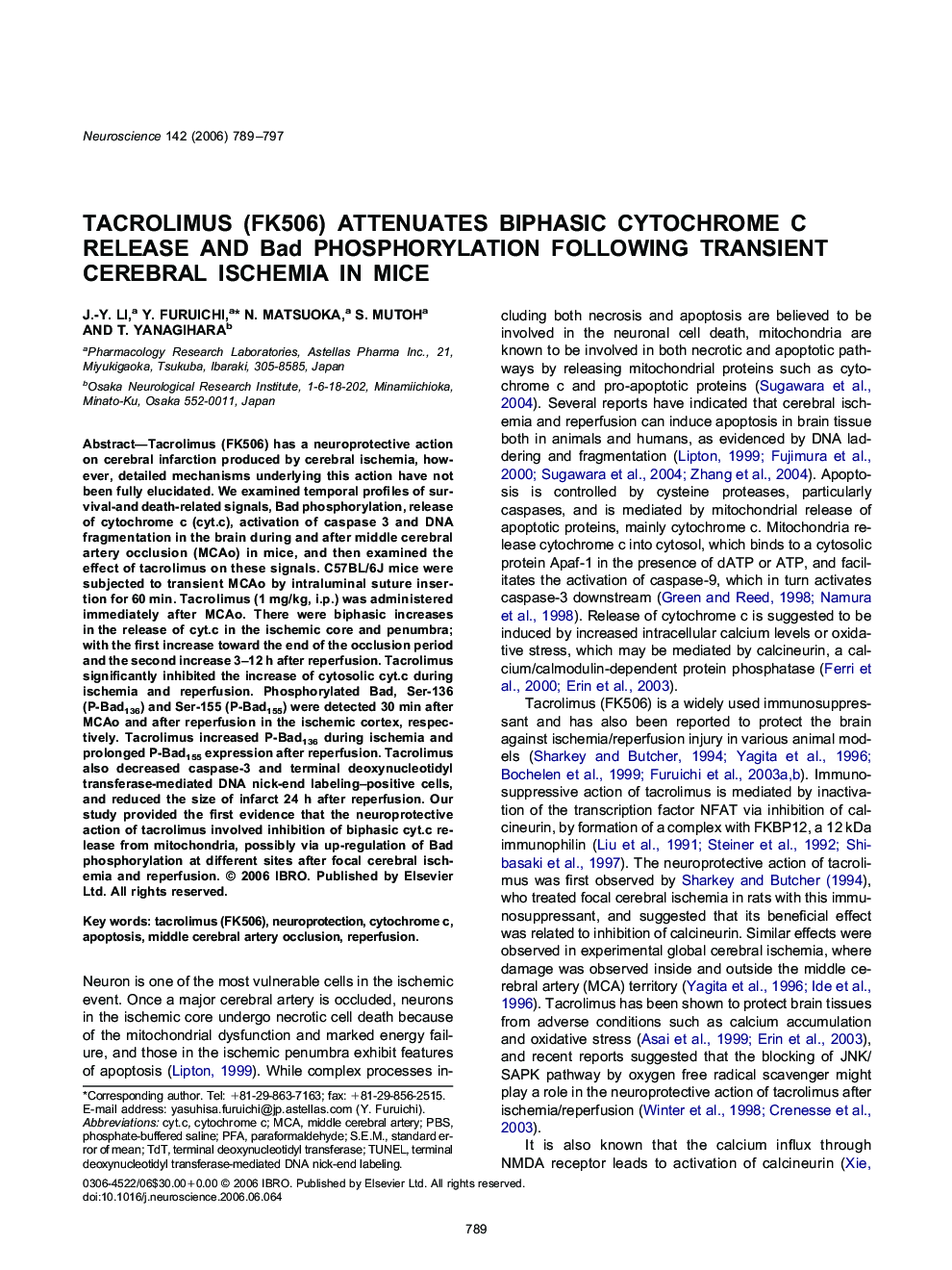| Article ID | Journal | Published Year | Pages | File Type |
|---|---|---|---|---|
| 4341961 | Neuroscience | 2006 | 9 Pages |
Tacrolimus (FK506) has a neuroprotective action on cerebral infarction produced by cerebral ischemia, however, detailed mechanisms underlying this action have not been fully elucidated. We examined temporal profiles of survival-and death-related signals, Bad phosphorylation, release of cytochrome c (cyt.c), activation of caspase 3 and DNA fragmentation in the brain during and after middle cerebral artery occlusion (MCAo) in mice, and then examined the effect of tacrolimus on these signals. C57BL/6J mice were subjected to transient MCAo by intraluminal suture insertion for 60 min. Tacrolimus (1 mg/kg, i.p.) was administered immediately after MCAo. There were biphasic increases in the release of cyt.c in the ischemic core and penumbra; with the first increase toward the end of the occlusion period and the second increase 3–12 h after reperfusion. Tacrolimus significantly inhibited the increase of cytosolic cyt.c during ischemia and reperfusion. Phosphorylated Bad, Ser-136 (P-Bad136) and Ser-155 (P-Bad155) were detected 30 min after MCAo and after reperfusion in the ischemic cortex, respectively. Tacrolimus increased P-Bad136 during ischemia and prolonged P-Bad155 expression after reperfusion. Tacrolimus also decreased caspase-3 and terminal deoxynucleotidyl transferase-mediated DNA nick-end labeling–positive cells, and reduced the size of infarct 24 h after reperfusion. Our study provided the first evidence that the neuroprotective action of tacrolimus involved inhibition of biphasic cyt.c release from mitochondria, possibly via up-regulation of Bad phosphorylation at different sites after focal cerebral ischemia and reperfusion.
